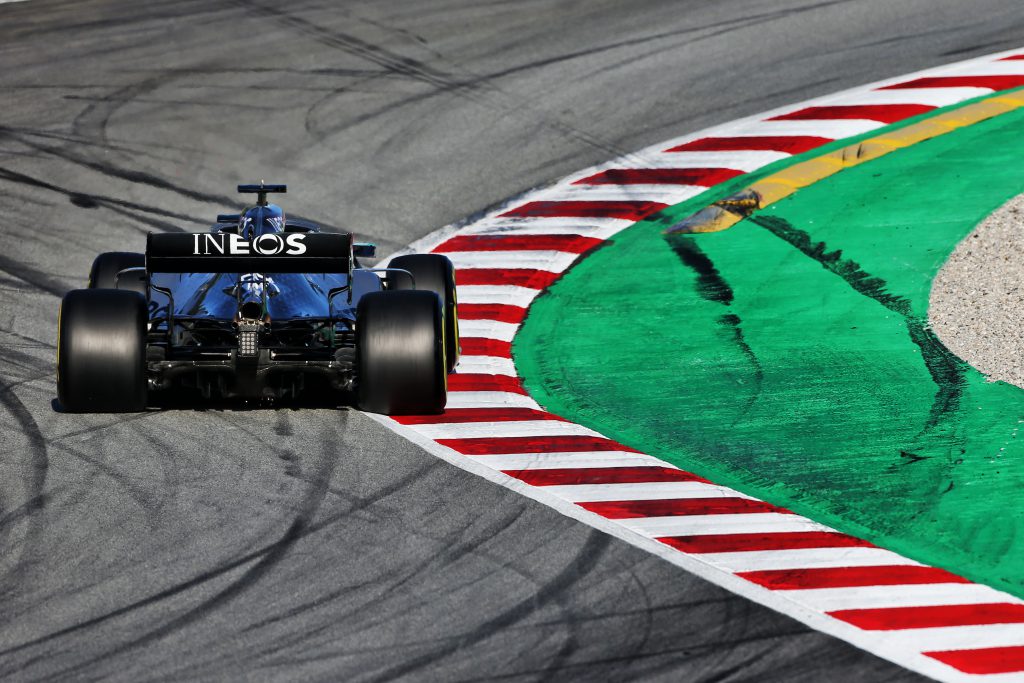Up Next

Formula 1’s next engine could realistically feature up to 50% electrical power as rulemakers want more hybridisation and greater efficiency with the power units from 2026.
F1 first introduced hybrid technology in 2009 with its Kinetic Energy Recovery System before committing to a turbocharged hybrid engine formula that began in 2014.
The energy recovery systems in the current V6 turbo-hybrids produce around 20% of the total power output when fully deployed and have contributed to thermal efficiency in excess of 50%, well beyond that of previous-generation F1 engines and current road cars.
F1’s current engine rules cycle is now in its seventh year and the FIA is targeting another major step with new regulations that are pencilled in for 2026, although this could move because of the current global health crisis.
Last year, Mercedes F1 boss Toto Wolff said F1’s next engine should be 50% electric, and in an exclusive interview with The Race FIA technical director Gilles Simon said this is “more realistic” in terms of its power output.
“There will be a trend to use more and more of the engine in the most efficient way, and to have more recovery from the electric components,” Simon told The Race. “We work on both fronts: higher power and efficiency for the electric systems.
“Before we are able to build a concept we need to have a clear mind of what technology we want to put into it.
“What we have just started, which is what we did in 2010, is first to have a clear mind of where the technologies are, and what will be the technologies in 10 years’ time. Then, we can put in place all the bricks to build a regulation that makes sense.”
F1’s performance requirements outstrip anything else in motorsport that uses electric technology.
For example, FE’s latest-generation car has 250kW of power, which is a 25% increase on F1’s ERS – but that is the all-electric racer’s total output, so there need to be significant gains for electrical energy and power to satisfy F1’s demands.
F1’s hybrid technology progress since KERS made its debut in 2009 and had a 60kW (80bhp) electric motor has already been impressive.
Mercedes’ initial test system for that energy store, which was developed back in 2007, weighed 107kg and had 39% efficiency. Now the energy store has a minimum weight of 20kg and boasts 96% efficiency, while the power ouput of the current energy recovery system is 200kW (268bhp).
“Working on the electric part will be an important aspect of the 2026 powertrain,” said Simon. “Today, it’s a very important topic everywhere. Everybody is speaking about electrification.
“The research we’ve done has given us a good overview over what’s possible and what’s coming into R&D for the next generation of batteries.
“We have some question marks, but we had more answers than on the combustion [engine technology].
“That’s why for now we’re looking to open some research on combustion to have pragmatic answers to the potential technologies in five or six years time, and in 10 years’ time, and be able to implement this for the next F1 generation.”
The FIA will take a “360-degree” look at the technologies available for 2026 including how to achieve even greater efficiency levels.
The 50% thermal efficiency barrier was a major achievement when Mercedes reached it back in 2017, but the FIA believes it is possible to go beyond that, if the regulations help unlock it.
“We need a few months before we can answer this, with the help of some laboratories, and once we have this we will be able to sit with colleagues and start to build new regulations,” said Simon.
“This is for 2026. So we have some time in front of us before we have fully-defined regulations.
“But the first stage is really research what are the potential technologies for the next step and how we can move forward by at least 10% the efficiency of the car – the combustion engine and the powertrain globally – and also find the right balance between the combustion engine and hybridisation.”



